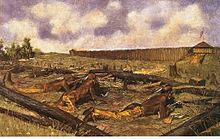
John Patton was the mayor of Detroit, Michigan, in 1858–1859.
Michilimackinac is derived from an Ottawa Ojibwe name for present-day Mackinac Island and the region around the Straits of Mackinac between Lake Huron and Lake Michigan. Early settlers of North America applied the term to the entire region along Lakes Huron, Michigan, and Superior. Today it is considered to be mostly within the boundaries of Michigan, in the United States. Michilimackinac was the original name for present day Mackinac Island and Mackinac County.

John R. Williams was an American soldier, merchant, and politician who is best known for serving as the first mayor of Detroit, Michigan, after the city's reincorporation. In total, he served as Detroit's mayor for five other terms. He also was a brigadier general in the United States Army during the Black Hawk War.

Fort Pontchartrain du Détroit or Fort Detroit (1701–1796) was a fort established on the north bank of the Detroit River by the French officer Antoine de la Mothe Cadillac and the Italian Alphonse de Tonty in 1701. In the 18th century, French colonial settlements developed on both sides of the river, based on the fur trade, missions, and farms.
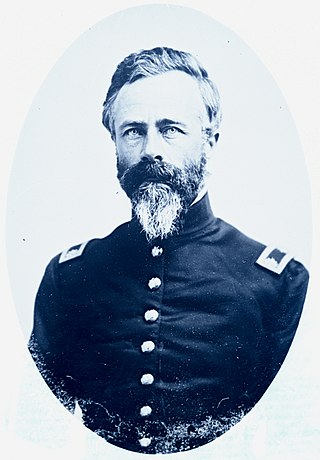
Thomas R. Williams was an antebellum United States Army officer and a brigadier general in the Union Army during the Civil War. He was killed as he commanded the Union troops at the Battle of Baton Rouge.
Martin Maier was founder and proprietor of Martin Maier Trunk and Bag Company which specialized in making specialty and sample trunks. His company, which was based in Detroit, Michigan, was one of the largest distributors of luggage and leather goods in the Midwestern United States.
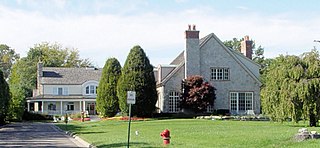
The Paul Harvey Deming House was a private residence located at 111 Lake Shore Rd. in Grosse Pointe Farms, Michigan. It was listed on the National Register of Historic Places and designated a Michigan State Historic Site in 1996 and demolished in 1997.
Normand MacLeod was a British Army officer, merchant, and official of the British Indian Department.

De Garmo Jones was a businessman, state senator, and mayor of Detroit.
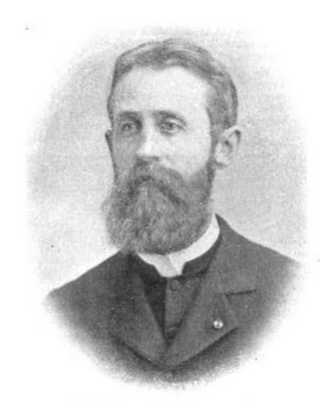
Gershom Mott Williams was an American bishop. He was the first Episcopalian bishop of Marquette. He was a church journalist, author, and translator. Williams graduated from Cornell University and received his master's degree and Doctor of Divinity degree from Hobart College. Although he passed the bar in 1879, Williams began an extensive career in the Episcopal Church, having positions in Buffalo, Milwaukee, and Detroit before becoming a bishop. He was involved in many church commissions, including the preparation of and attendance at the Lambeth Conference of 1908.

Francis Palms (1809–1886) was the largest landholder in Michigan during the mid-1850s. He had major business interests as well and was nicknamed "Croesus" because of his wealth.
Thomas Hunt (1754—1808) was an American military officer who served in the Continental Army during the American Revolutionary War and later served in the United States Army where he rose to the rank of colonel and served until his death.

Joseph Campau was among the leading citizens and wealthiest landowners in Detroit, Michigan, at the beginning of the 19th century. Campau had three trading posts and a store in Detroit until the early 1800s. He then embarked on a real-estate career that made him very wealthy. Campau was also a newspaper man, establishing a newspaper with his nephew, John R. Williams. He held several city public offices for the city. Campau was an officer in the Michigan Territory Militia and during the War of 1812.

The Campau family of Detroit, Michigan, was established when brothers Michel and Jacques Campau settled in Detroit, Michigan in 1707 and 1708, respectively. Jacques, Joseph Campau, and Barnabé Campau are among the Barons of Detroit, according to Richard R. Elliott, because they had "ancestral virtues most worthily perpetuated."
Conrad "Old Coon" Ten Eyck, also known as Conrad TenEyck or Teneyck, was an American politician in the U.S. state of Michigan in the mid-19th century. He served as a member of the Michigan Senate starting in its inaugural session in 1835, and as a member of the Michigan House of Representatives in 1846.
Jonathan Prescott Fay was an American physician and politician who served in the Michigan House of Representatives in its first session following adoption of the state's constitution in 1835, and died while in office.
Charles Moran was an American businessman, jurist, and politician who served three terms in the Michigan House of Representatives. His family was prominent in early Detroit, and he is also related to the Campau and Dequindre families who were influential in the growth of the city.
John Strong Sr. was an English–American farmer and politician who served one term in the Michigan House of Representatives, and was an early settler of Greenfield Township, Michigan.
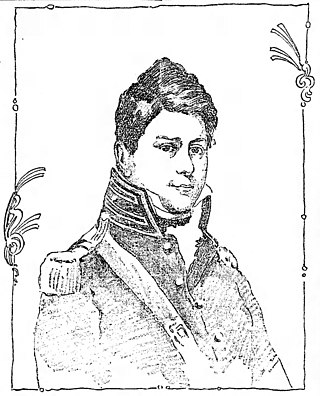
Abraham Edwards was an American physician and politician in the U.S. state of Michigan. He served in the U.S. Army during the War of 1812 and was president of the Michigan Territorial Council for a majority of its existence.


